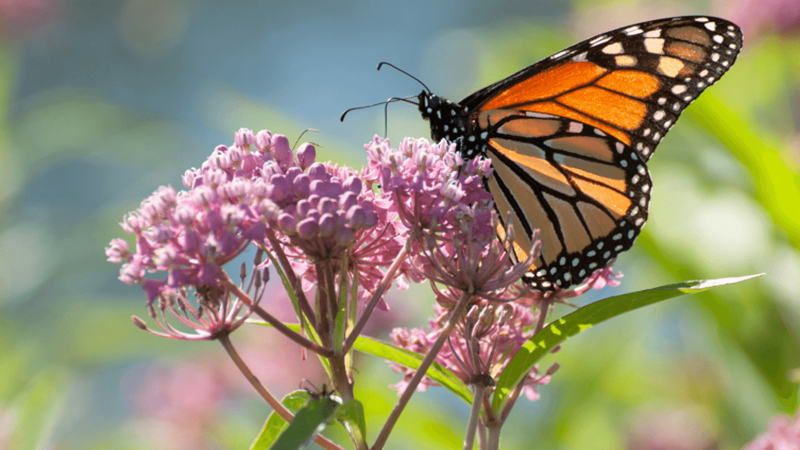Numerous studies have documented the negative effects of neonicotinoids on bees; it remains crucial to examine how neonicotinoids affect other non-target nectar-feeding insects, such as the monarch butterfly, Danaus plexippus.
Wildflowers growing near agricultural areas can be contaminated with neonicotinoids that affect survival or cause sublethal changes to behaviours of nectar-feeding insects. Nectar residues of imidacloprid and clothianidin found in milkweeds and wildflowers adjacent to agricultural field range from 0 to 72.8 ng/mL.
At field-relevant doses, two neonicotinoids (imidacloprid and clothianidin) were studied for their effects on adult monarch survival, reproduction, flight and behaviour. First, we fed adult monarchs artificial nectar solutions ranging from 15 to 386 ng/mL of imidacloprid and 19 to 531 ng/mL of clothianidin. Neonicotinoid ingestion slightly reduced monarch reproduction but had no significant effects on survival, weight change, or activity levels.
Second, we fed monarchs higher clothianidin doses (909 and 4030 ng/mL), that exceed field-relevant levels by 22 and 99 times. These higher doses reduced monarch nectar consumption, survival, flight performance and reaction time in response to a drop test.
Results show that adult monarchs tolerate field-relevant doses as high as 54 ng/mL for imidacloprid and 75 ng/mL for clothianidin, with minimal lethal or sub-lethal effects until much higher doses are supplied. We conclude that adult monarchs are more tolerant of ingested clothianidin and imidacloprid than indicated by previous research.































